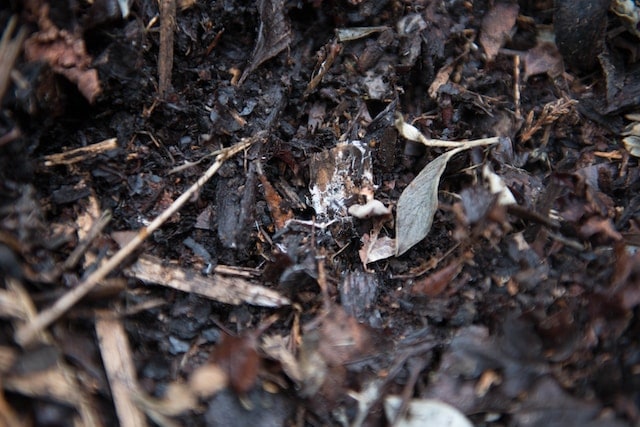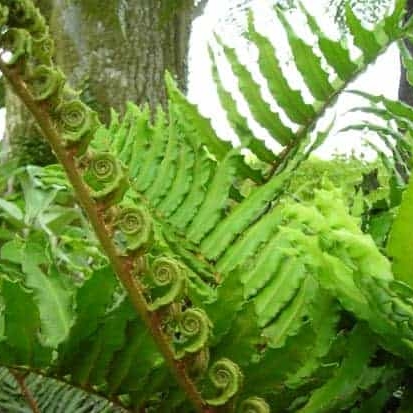Composting: Your options for managing green waste at home
Home composting is an eco-friendly way of managing green waste, such as hedge clippings, leaves, lawn clippings, and cleared plant debris in winter. There are several main composting methods, each with its unique approach and a set of advantages and challenges.
Open Composting Piles
This is the lowest-tech option. Open composting involves creating a pile of organic waste in a designated area. The waste breaks down through natural processes, facilitated by worms and microorganisms that find their way naturally to the heap from the surrounding garden. Occasional turning with a garden fork is helpful but not strictly needed.
Upsides: Open composting is cost-effective, as it doesn’t require a specific bin. It’s also low-maintenance and can handle substantial amounts of waste.
Downsides: On the flip side, open composting may not be the most aesthetically pleasing option, and decomposition can be slower without regular turning and proper management.
Compost Bins
Compost bins, often made of plastic or wood, create a contained environment for organic waste to decompose. The process relies on microorganisms and worms that tend to find their own way in but may be added if the heap is far from natural worm habitat such as soil and leaf litter.
Upsides: Compost bins are user-friendly and adaptable, accommodating a variety of waste. They are available in different sizes to suit different needs or you can make your own. Pallets are commonly used but try to use heavy duty treated types that are more resistant to rotting.
Downsides: However, compost bins may have limitations on the types of waste they can handle, excluding items like meat and dairy. Additionally, some users find them aesthetically unappealing, and they do occupy space in the garden.
Worm Bins (Vermicomposting)
Vermicomposting employs special types of worms (such as red wigglers) to break down organic matter. The worms consume the waste, and their castings (excrement) become nutrient-rich compost.
Upsides: Vermicomposting is efficient and can even be done indoors, making it an excellent option for those with limited outdoor space. The resulting compost is particularly potent in nutrients.
Downsides: Worm bins require careful management. Monitoring moisture levels is crucial, and if not maintained properly, they can emit unpleasant odours.
Tumblers
Compost tumblers are spinning containers that can be turned to facilitate aeration and mixing. This accelerates the composting process, great if you want a quick supply of great quality compost.
Upsides: Tumblers offer efficient aeration, are convenient to turn, and may be more space-efficient than open piles.
Downsides: They can be pricier than traditional bins, and generally do not have a big capacity, so they need frequent attention to load, turn and empty the composter if you have a large volume of green waste to process.
Remember to use the compost, so it doesn’t build up and become unmanageable. Winter or spring is a good time to spread the black gold around the beds and borders, under shrubs or as a mulch on herbaceous plantings. Be aware, if the heap wasn’t hot, the compost may be full of weed seeds, so use the compost somewhere you can hoe off in spring. Whether it’s the convenience of compost bins, the efficiency of vermicomposting, the simplicity of open piles, the aeration benefits of tumblers, each method has its strengths and considerations.
Photo by Julietta Watson on Unsplash
Owen Hayman
Owen joined the Bestall & Co planting and aftercare team in spring 2019. He is an RHS qualified horticulturist, holding a full Level 3 Diploma in Horticulture, and recently came in the top 3 at the Northern Regional Final of The Young Horticulturist of the Year 2019. After first doing a foundation diploma in Fine Art, he went on to gain a degree and masters in Plant and Soil Science from the University of Sheffield in 2014. Owen worked as a researcher on various field research projects in Alaska, Panama and Borneo. When not away in the field, he became obsessed with visiting gardens and nurseries across the British Isles and the Netherlands, developing his own garden, and then taking on a walled allotment garden as a personal project. He realised his true passion was in horticulture, and so moved away from academia and into the world of specialist plant nurseries and professional gardening.
Owen is now studying the Wisley Diploma, but continues to write articles for us on a monthly basis, and we're delighted to maintain contact with such a passionate and knowledgable plantsman.




